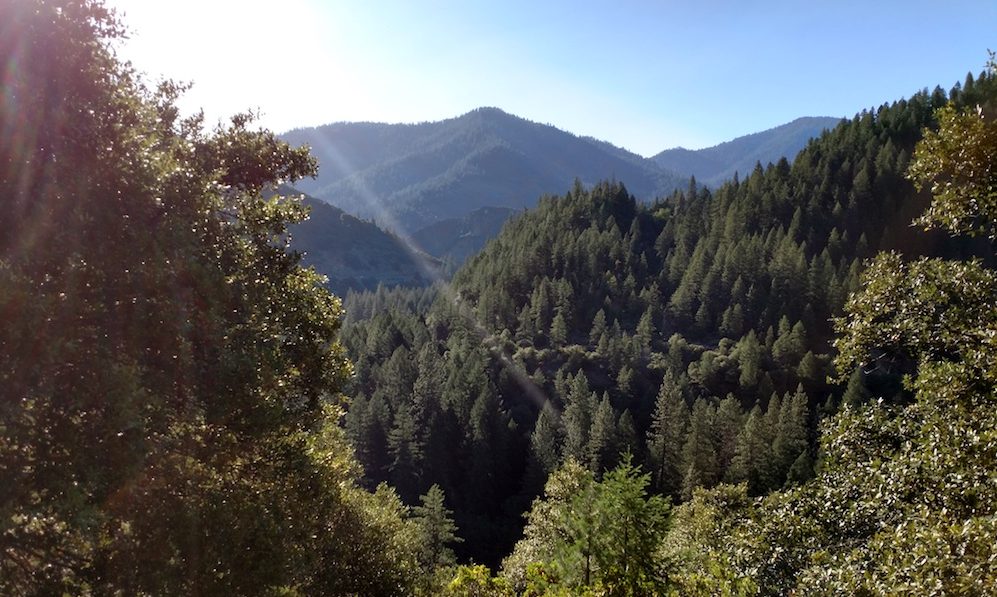Between the magnificent, blue Lake Tahoe and the towering massif of Lassen Peak in northern California lies a stretch of forest that many folks, including most Californians, know little about. Containing 127,000 acres of intact old growth fir and pine forest and 75 miles of Pacific Crest Trail, the 1,146,000 acre Plumas National Forest embodies the heart of California’s northern Sierra Nevada. Places like Bucks Lake Wilderness, the steep canyons of the Middle and North Forks of the Feather River, historic Indian Valley and 640-foot Feather Falls represent the Forest’s broad diversity of vegetation, topography and recreational opportunities.

Project partner USFS Botanist Jim Belsher-Howe (middle) is flanked on his right by ACE crew leaders Jack Colpitt and Kaye Thomas and on his left by ACE Restoration Coordinator Dennis Frenier and ACE National Forestry Program Manager Carl Nelson.
In 2017, American Conservation Experience’s northern California office, based in South Lake Tahoe, launched a 5-year, $250,000 partnership with the Plumas National Forest. Restoration work would include invasive plant control and conifer thinning to enhance rare aspen stand health and sensitive species habitat.

Gridding for yellow starthistle (Centaurea solstitialis) on the rocky banks of the North Fork of the Feather River at a place called Misery Bar.

It may not look like much, but this is a grouping of Webber’s milkvetch (Astragalus webberi), found at Misery Bar. This critically imperiled plant is found only in the Plumas National Forest. Its habitat greatly threatened by quickly spreading invasive plant species.
In 2018, priority invasive weed projects will take place in several wildland fire scars — the 52,000-acre Storrie Fire, which started from an accidental ignition by the Union Pacific Railroad in 2000, and the 65,000-acre and heavily litigated Moonlight Fire which occurred in 2007. ACE crews will work in these areas through the summer. Manually and chemically treating encroaching weeds like Canada thistle, yellow starthistle, spotted knapweed, invasive mustards and medusahead rye.
ACE’s Northern California office is young and eager to grow. Led by enthusiastic and newly positioned Patrick Parcel, the branch looks to evolve and spread their restoration program. “That’s definitely a huge goal of ours,” says Patrick. “We not only want to continue to build our relationship with the Plumas, but soon expand our restoration work to the Sierra and Inyo National Forests.”





